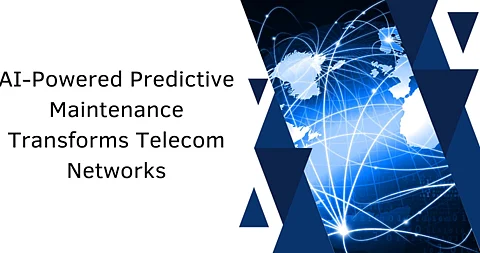

In this Digital world, innovative AI research by telecommunications expert Ramanathan Sekkappan is transforming network maintenance. His study showcases how AI-powered predictive maintenance systems analyze patterns, detect potential failures, and automatically schedule repairs, significantly enhancing telecom infrastructure reliability. This pioneering approach represents a paradigm shift in network management, promising reduced downtime and optimized performance.
The paradigm is, therefore, changing from reactive maintenance to proactive with modern telecommunication networks. Currently, AI algorithms in advanced technologies handle more than 600,000 unique data points within one operational cycle over 24 hours and enable maintenance teams to address impending issues before those issues negatively impact service quality. This revolution in approach has cut network downtime between 23 to 28% and brought the cost of maintaining the different types of network structures down by as much as 35%.
Failure forecasting capabilities have dramatically improved with the integration of AI-powered predictive systems. Now, such complex systems can predict possible failures 89% up to 96 hours before it happens. This technology has kept on monitoring the key performance indicators such as fluctuations in signal strength and power consumption patterns. With such an increase in network availability to a whooping 99.999% and reducing emergency maintenance requests by 78%.
The major innovation in this area is the adoption of distributed computing architectures. Such advanced systems have achieved a 77% reduction in system latency compared to the traditional centralized solution, while at the same time improving local failure prediction accuracy by 41%. The architecture processes about 180,000 events per node, thus delivering unprecedented efficiency in network health monitoring while consuming 58% less energy than conventional cloud-based solutions.
The development of autonomous maintenance capabilities represents another breakthrough in network management. Current systems are able to automatically identify and resolve as much as 76% of common network issues without human intervention. This automation has seen a 65% reduction in times to repair problems related to hardware and a 39% reduction in times to resolve incidents caused by software. Organizations that are implementing these autonomous systems report that overall network performance metrics have improved by 34%.
Advanced data processing capabilities make AI-powered maintenance systems effective. Such systems process massive volumes of operational data, amounting to 1.8 to 2.4 petabytes, for the accurate prediction of maintenance. Robust data management frameworks have led to improved predictive models by organizations, and their accuracy is increased by as much as 65%. In addition, the false positives are reduced by 48%, thus maintaining efforts are made on real issues, conserving resources, and reducing unnecessary interventions.
With the integration of quantum computing and advanced neural networks, AI-driven predictive maintenance is in a very transformative future. Such advanced technologies enhance automation, increase efficiency, and improve reliability within telecom networks. State-of-the-art AI systems are already capable of near-accurate results in predicting the degradation of equipment as far as four months ahead with 91% accuracy. This vision enables organizations to better utilize resources and plan maintenance schedules in a more efficient manner, which has significantly improved operational efficiency. Maintenance efficiency has improved by 33%, and unscheduled downtime has decreased by 29%. These developments are opening up more robust and cost-effective telecom infrastructures.
The implementation of AI-driven predictive maintenance systems in telecom networks offers significant benefits but requires careful planning and execution. Training is very essential, consuming approximately 140 hours per technical staff member before he or she becomes proficient using such advanced technologies. System manager and maintenance supervisory training in their respective capacities to manage their operation is essential as well. Strong change management practices pay tremendous dividends, showing increases of as much as 71% better adoption by end users and even reductions of as much as 49% in resistance to the implementation. These initiatives facilitate smoother transitions, allowing companies to fully exploit the technology's potential for cost efficiency and operational excellence.
Telecommunications has revolutionized its approach with AI-driven predictive maintenance, significantly reducing costs and improving efficiency. The mean annual savings are 31% in the cost of maintaining the product due to on-time identification and prevention of issues. The quality of service and reliability of a network improve with this innovation. At the same time, AI saves 40% of non-essential repair works; therefore, it can be called a game-changer for sustainability and profitability in the telecom industry.
In conclusion, with Ramanathan Sekkappan's work, integration of AI-driven predictive maintenance represents the most significant paradigm shift in how telecommunications networks are managed and maintained. Advanced analytics, autonomous systems, and proactive maintenance strategies are setting new standards for network reliability and operational efficiency in the telecommunication industry.
